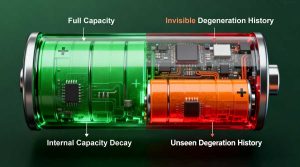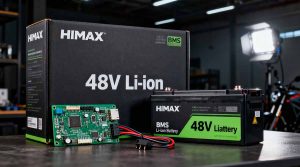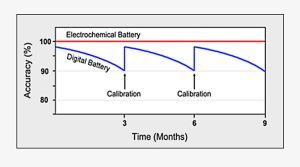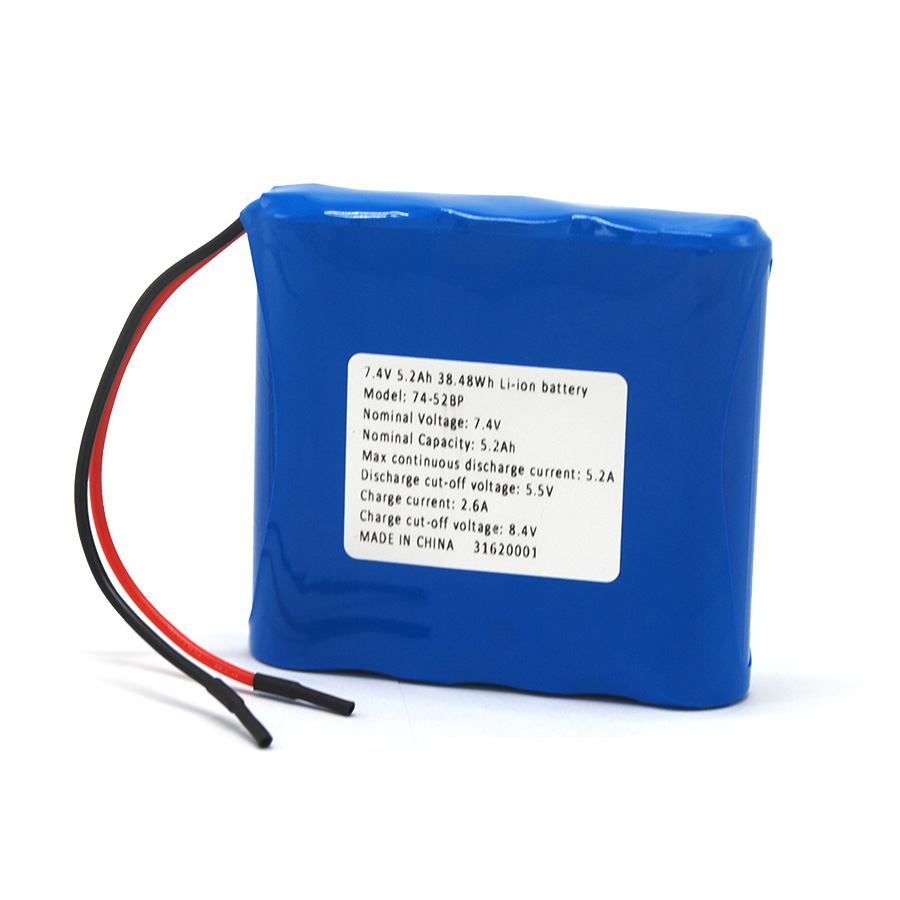A modern battery isn’t just a power source—it’s a storyteller. Hidden inside every pack are layers of data that reveal how energy is stored, delivered, and ultimately fades over time.
1. The Hidden Truth Behind Battery Life
Every engineer knows that a battery’s lifespan cannot be defined by “age” or “cycle count” alone.
Its true life depends on how it’s used—or misused. Over time, as internal capacity fades, the available runtime shortens, even if the exterior looks perfectly fine.
This performance decay often goes unseen because most batteries still act as black boxes, concealing their degradation history. Smart batteries were designed to change that—to make the invisible visible.
2. Communication: The Core of Smart Battery Design
One of the most powerful roles of a smart battery is to communicate—continuously—between three critical elements:
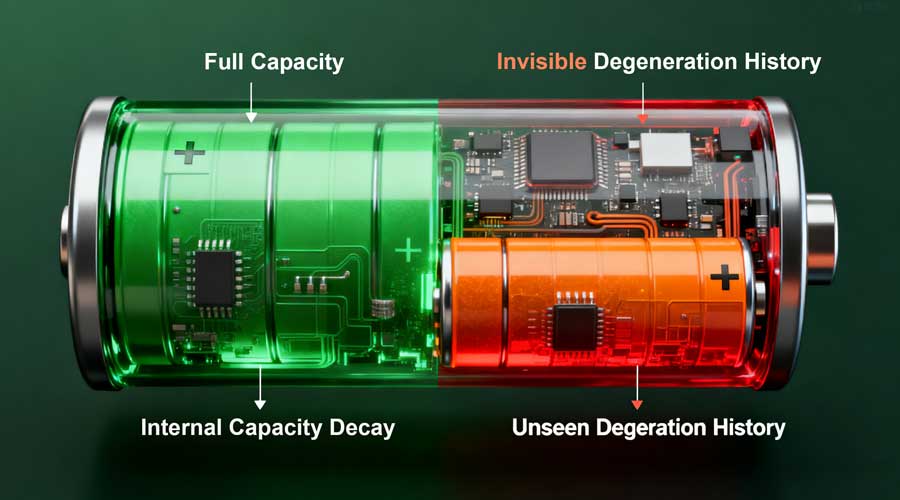
| Component | Function |
| Battery | Monitors internal charge and health data |
| Charger | Adjusts charging behavior based on feedback |
| User / Device | Receives clear, actionable status updates |
The fuel gauge is the visible part of this communication chain.
It translates electrochemical data into a simple visual readout of state of charge (SoC)—whether through LEDs, bars, or digital screens.
A typical SMBus battery might show all LEDs lit when full, three when 75% charged, and one or none when nearly empty.
Yet, this display only shows SoC—not the true energy capacity remaining.
3. The Misleading 100%: When Full Isn’t Really Full
Aging batteries often report “100% charge” even when their real capacity has dropped by half.
If a healthy pack once provided 4 hours of runtime, an aged pack at “100% SoC” might last only 2 hours.
This raises a fundamental question engineers must ask:
“100% of what?”
That’s why capacity, not just SoC, is the key metric for understanding battery health.
4. From Chemical Battery to Digital Battery
To accurately measure battery performance, engineers distinguish between two realities:
| Term | Definition |
| Chemical Battery | The actual stored energy determined by fully discharging the pack under controlled conditions. |
| Digital Battery | The monitoring circuit within the pack that estimates capacity based on usage history and coulomb counting. |
The digital battery uses coulomb counting—tracking how much charge enters and exits—to estimate Full Charge Capacity (FCC) and State of Health (SoH).
Each cycle updates this internal record, helping the pack “learn” how much energy it can still hold.
5. Measuring Accuracy and Calibration
In real-world conditions, FCC accuracy is typically within ±5% when deep-cycled regularly.
To maintain this precision, periodic calibration (a full charge–discharge cycle every few months) is recommended.
Coulomb counting during charging can also estimate capacity—especially when starting from an empty battery.
However, if residual SoC is unknown or if temperature fluctuates, readings may drift.
Open Circuit Voltage (OCV) measurements can supplement this data but remain an approximation due to electrochemical agitation.
6. The Tri-State Fuel Gauge: A Smarter Display
To communicate battery function more transparently, engineers use tri-state fuel gauges, often with colored LED indicators:
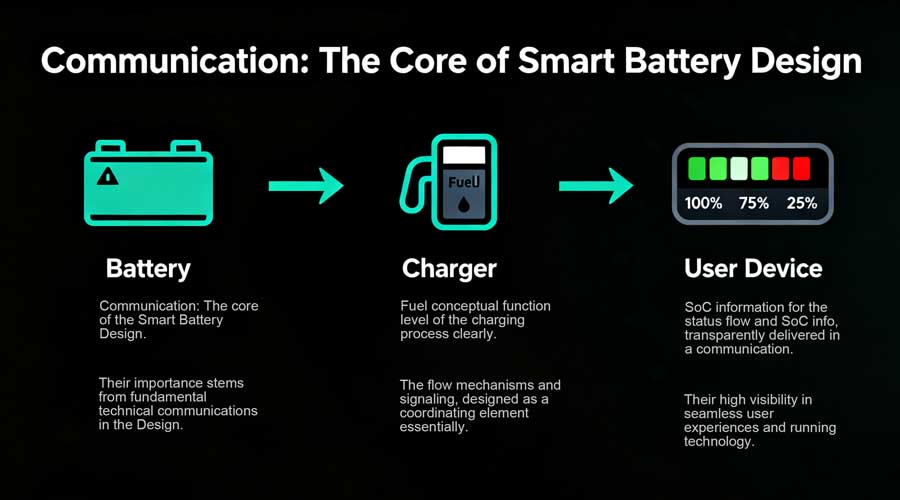
| Indicator Color | Meaning |
| ⚫ Green | Usable capacity (healthy operating range) |
| ⚫ Off / Dark | Empty portion of the battery |
| ⚫ Red | Unusable or degraded section |
This design not only displays SoC but also represents State of Function (SoF)—a deeper diagnostic showing how much usable capacity remains relative to design specs.
Many industrial devices integrate this system to allow service teams to access hidden performance data through coded service interfaces.
7. Why EVs Hide Their True Capacity
Electric vehicles (EVs) provide an interesting case.
They don’t display SoC directly; instead, they show driving range.
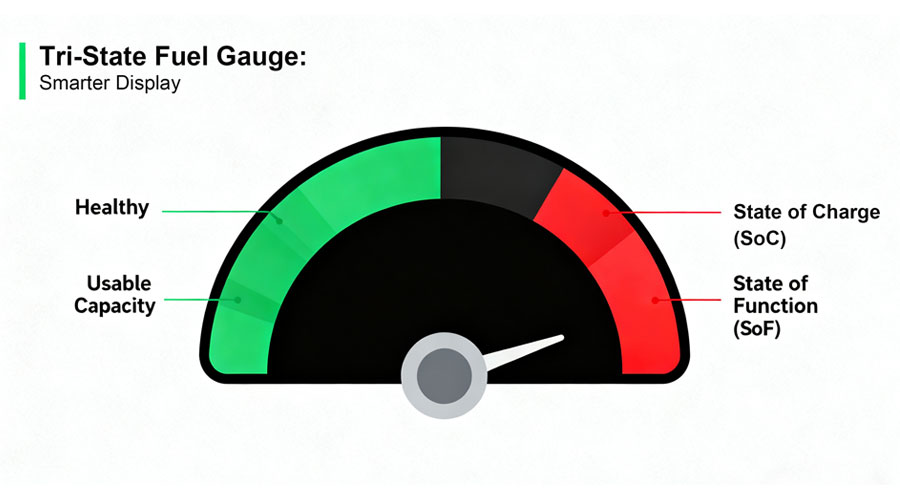
To mask capacity fade and preserve consistent performance, EV batteries are oversized and operate within a limited charge–discharge window.
As the battery ages, that window expands to compensate—only when the buffer is exhausted does the driver notice a reduction in range.
This intelligent capacity management ensures user trust while balancing performance and longevity.
8. Himax Insight: Designing Transparency into Power
At Himax Battery, we believe data transparency defines the next era of energy management.
Our smart battery systems integrate precise coulomb counting, advanced SoH analytics, and multi-layer communication interfaces (1-Wire, SMBus, CAN) to deliver dependable, measurable, and traceable power.
Whether in EV modules, industrial automation, or medical devices, Himax technology enables OEM partners to understand—not guess—the true state of their batteries.

